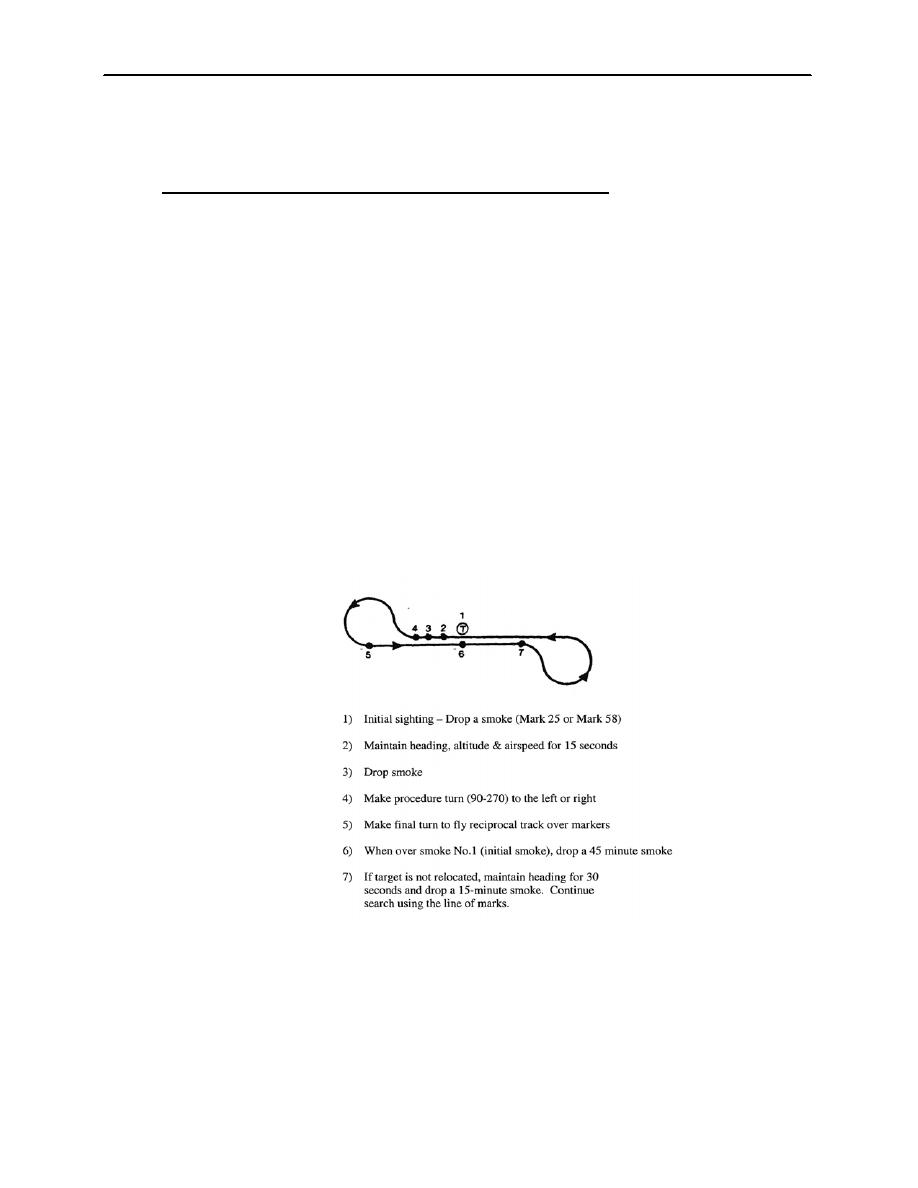 |
|||
|
|
|||
|
Page Title:
Figure 8-9 Survivor Relocation Pattern |
|
||
| ||||||||||
|
|  JOINT ADVANCED MULTI-ENGINE T-44A
heard and is possibly for your aircraft, turn to either parallel or away from the coast and answer on either
guard or the GCI frequency to clarify your position and identification. Failure to do so could result in a
possible interception and ADIZ violation.
810.
SAR Patterns (Ref (a), pg 6-21 & 22 & Ref (c), pg 2-94 through 2-106). The following three SAR
patterns will be introduced to Coast Guard student aviators: survivor relocation pattern, Parachute Air
Delivery system (PADS) pattern, and Sea Rescue Kit delivery pattern. Students are not required to have
these patterns memorized and are encouraged to sketch the patterns on a kneeboard card for reference
during the flight. The Coast Guard uses the following two types of flares/smokes: Mark-25 (burns for 15
minutes) and Mark-58 (burns for 45 minutes).
(1)
Survivor Relocation Pattern. Often a SRU, especially a fixed wing aircraft, will not be able to
identify an object on the first pass, thus requiring maneuvering by the SRU to relocate the object. As it is
not unusual for a fixed wing SRU to lose sight of the target while maneuvering, it is important to have a
definite plan for relocating and identifying a sighted object. During the search briefing, the Aircraft
Commander should brief the crew on the plan/procedure to relocate an object sighted during the search.
The survivor relocation pattern in one procedure that maybe used. Upon the initial sighting of an object, a
flare (either a Mark 25 or a Mark 58) should be immediately deployed. Fifteen seconds after the first flare
is deployed, a second smoke should be deployed. The pilot should make a procedure turn (90-270 either
left or right), adjusting the final portion of the turn to roll out on a heading allowing the aircraft to line up
with and fly directly over the two smokes. At the Aircraft Commander's discretion, the smokes can be
brought down either the non-flying pilot's side of the aircraft or the flying pilot's side. When abeam the
first smoke dropped, a 45-minute smoke (Mark 58) should be deployed. If the object is not sighted, the
SRU should continue for 30 seconds and drop another 15-minute smoke. Parallel sweeps on the line of
smokes are made until the object is relocated. Additional smokes maybe deployed as required. The
survivor relocation pattern will be flown at 120 KIAS, 500' AWL with approach flaps. See figure 8-9 for
survivor relocation pattern.
Figure 8-9 Survivor Relocation Pattern
(2)
Parachute Air Delivery System (PADS) pattern. The PADS pattern is designed to deliver a
dewatering pump, which is in a barrel type container (commonly referred to as a pump can), to a vessel
taking on water. The container can be filled with other items, such as parts for a repair, as long as the pump
can's weight is within parachute limitation. When a vessel is dead in the water, it will align itself
perpendicular to the wind (broadside to the wind). Before entering the PADS pattern, a smoke (most likely
a Mark 58) will be deployed near the vessel. This smoke will be used to identify wind direction and
8-8
SEARCH AND RESCUE FUNDAMENTALS
|
|
Privacy Statement - Press Release - Copyright Information. - Contact Us |